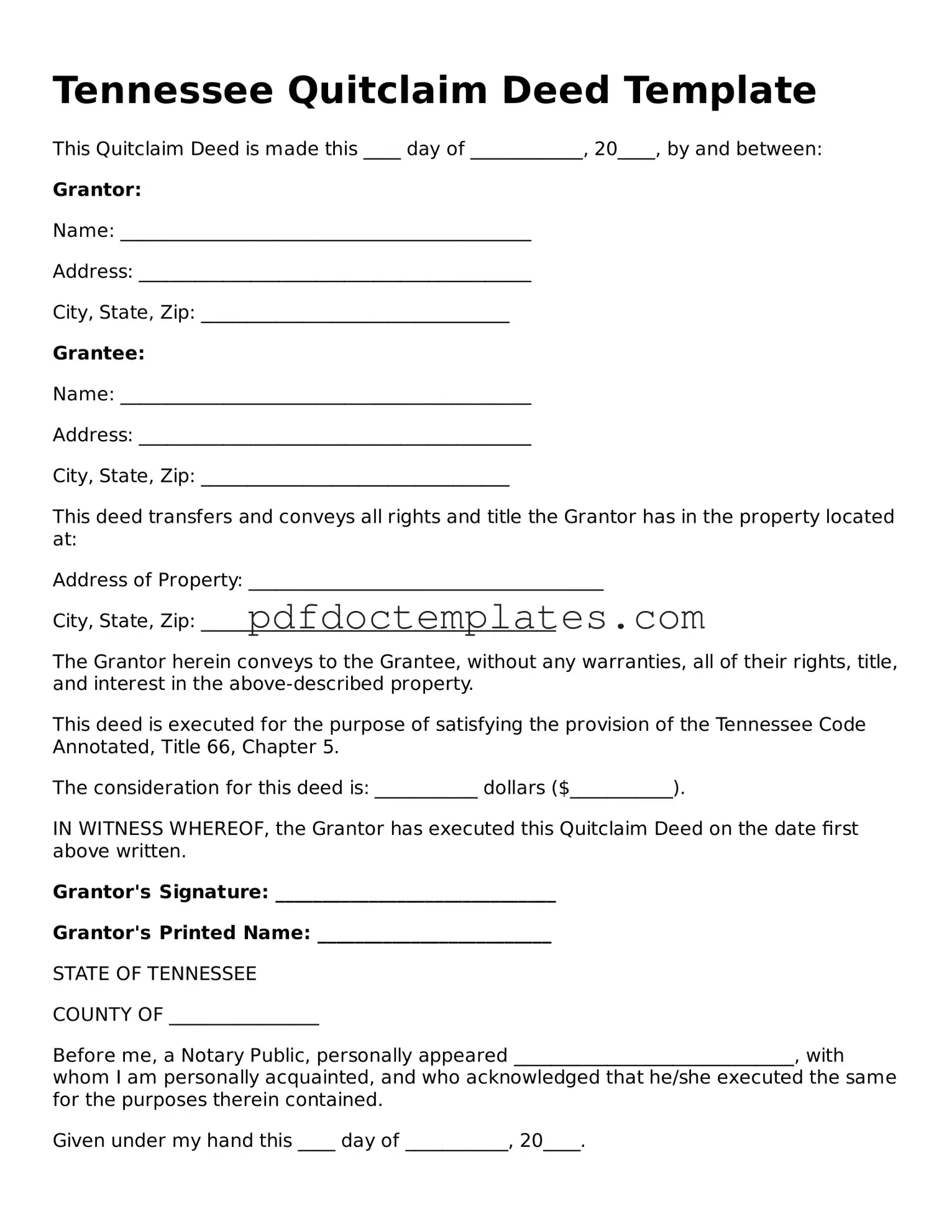Tennessee Quitclaim Deed Template
This Quitclaim Deed is made this ____ day of ____________, 20____, by and between:
Grantor:
Name: ____________________________________________
Address: __________________________________________
City, State, Zip: _________________________________
Grantee:
Name: ____________________________________________
Address: __________________________________________
City, State, Zip: _________________________________
This deed transfers and conveys all rights and title the Grantor has in the property located at:
Address of Property: ______________________________________
City, State, Zip: ______________________________________
The Grantor herein conveys to the Grantee, without any warranties, all of their rights, title, and interest in the above-described property.
This deed is executed for the purpose of satisfying the provision of the Tennessee Code Annotated, Title 66, Chapter 5.
The consideration for this deed is: ___________ dollars ($___________).
IN WITNESS WHEREOF, the Grantor has executed this Quitclaim Deed on the date first above written.
Grantor's Signature: ______________________________
Grantor's Printed Name: _________________________
STATE OF TENNESSEE
COUNTY OF ________________
Before me, a Notary Public, personally appeared ______________________________, with whom I am personally acquainted, and who acknowledged that he/she executed the same for the purposes therein contained.
Given under my hand this ____ day of ___________, 20____.
Notary Public: _________________________
My Commission Expires: ________________
